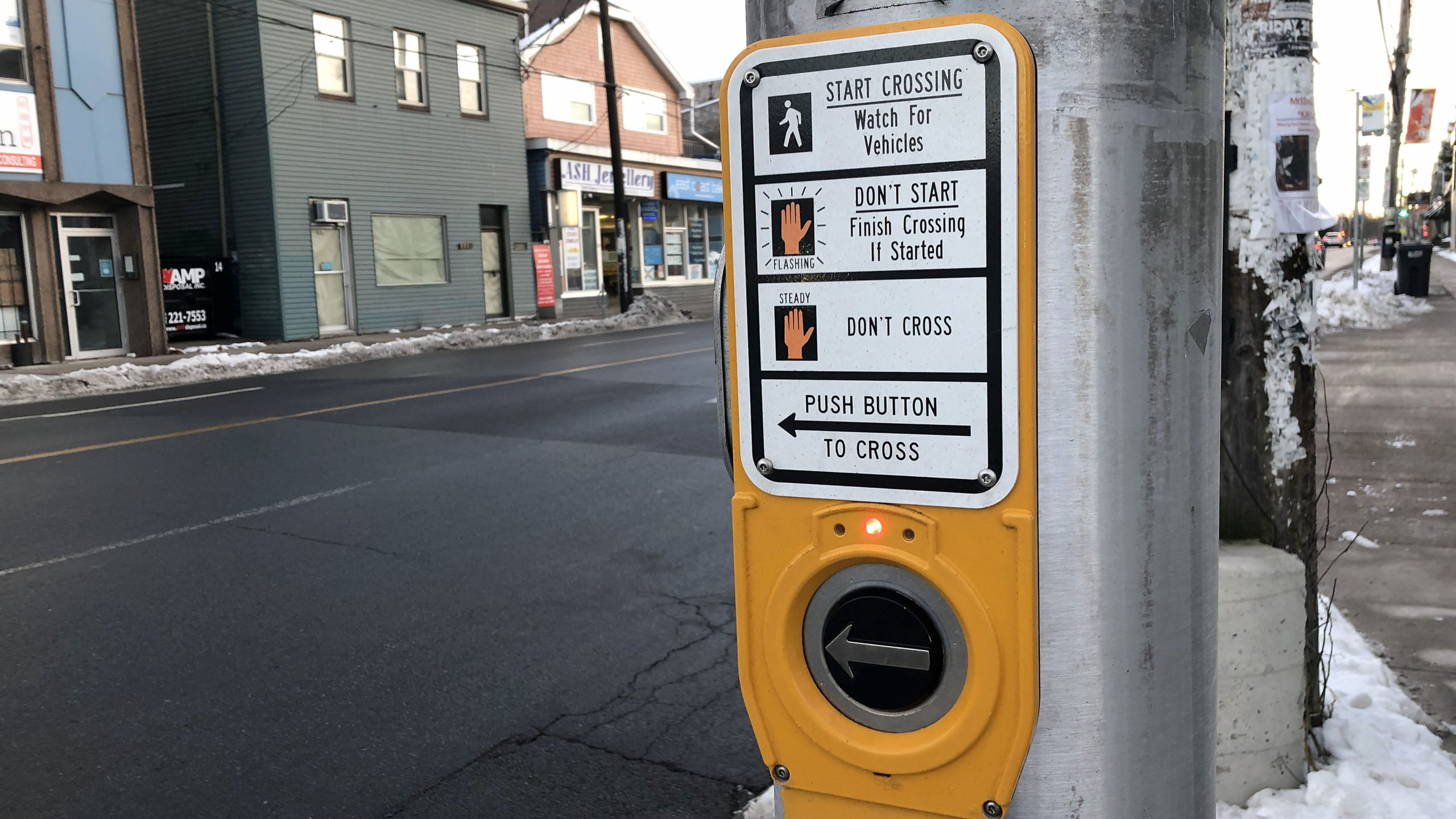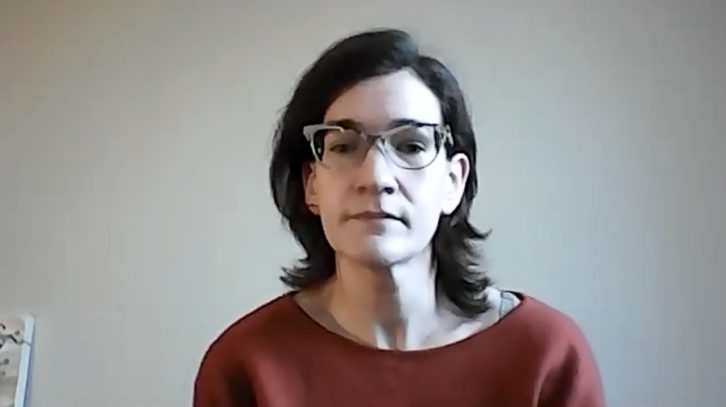Report recommends removing pedestrian push buttons in Halifax
Changes to crossing the road will prioritize pedestrians over cars, says councillor

caption
The Transportation Standing Committee is looking at getting rid of pedestrian push buttons.People crossing intersections soon won’t have to push a button to get a walk signal, if recommendations from a city hall committee go through.
A staff report before Halifax’s transportation standing committee last week recommended getting rid of 93 pedestrian push buttons, also known as “beg” buttons. Instead of having to push a button to get the “walk” signal, it would instead change automatically with the traffic light. Out of the 274 pedestrian traffic signals in the HRM, 100 already do this.
If the changes go through, 81 push buttons will still be in place.
Coun. Waye Mason and Coun. Shawn Cleary asked for the report last September, with the goal of making intersections more accessible and less confusing. Related stories
“If more intersections automatically let pedestrians cross, then [they] don’t have to worry about ‘oh I forgot to push the button, I didn’t get the signal so now I have to wait for the next one, or wonder if a driver’s going to hit me when I try to go across the road,'” Coun. Cleary told The Signal.
The report also recommends making pedestrian signals automatic at 144 intersections between midnight and 6 a.m., and making Accessible Pedestrian Signals easier to activate.
Right now, those specific accessible buttons have to be held for three seconds to hear an audible tone. That would be changed so that one press of the button would do the same thing.
The changes would make the signals at intersections more consistent, said Cleary.
“It’s a way of acknowledging that pedestrians are important or perhaps even more important than cars are,” he said.
Accessibility
For some pedestrians, removing these “beg” buttons will make a difference.
April Hubbard is a disability advocate in Halifax. She uses a wheelchair. Pedestrian push buttons are often out of reach for her, especially in the winter when snow isn’t cleared properly.

caption
Disability advocate April Hubbard said that the proposed changes to intersections are unclear.“An automatic system would be very helpful in that way,” she said in an interview.
But she’s not sure how the proposed changes will affect accessibility for people with various disabilities. She said there have been rumours about automatic signals, different timing systems and using sensors to activate walk signals, which would pose a problem for wheelchair users.
“I don’t feel it’s been communicated very clearly what the changes will be,” said Hubbard.
“We just want to be part of the conversation and really be heard so that all of our concerns and needs are met in the end.”
The report says there could be increased noise pollution from the accessible pedestrian signals, and more traffic in some areas.
The transportation standing committee will decide on these changes at its next meeting on Feb. 25.
About the author
Sarah Moore
Sarah Moore is a journalist from Calgary who is working in Halifax.
